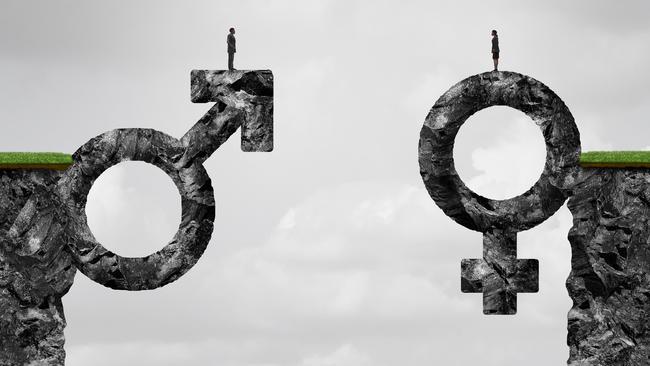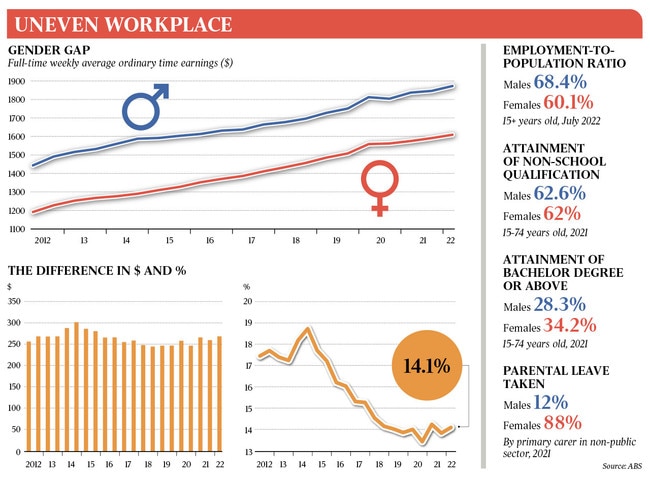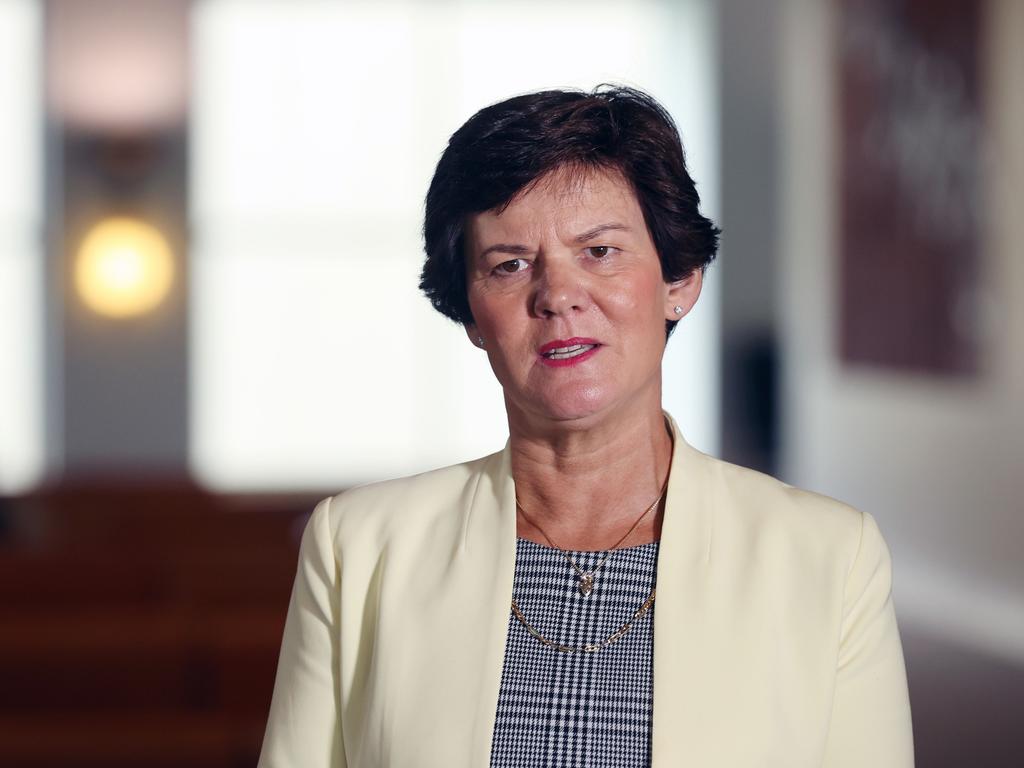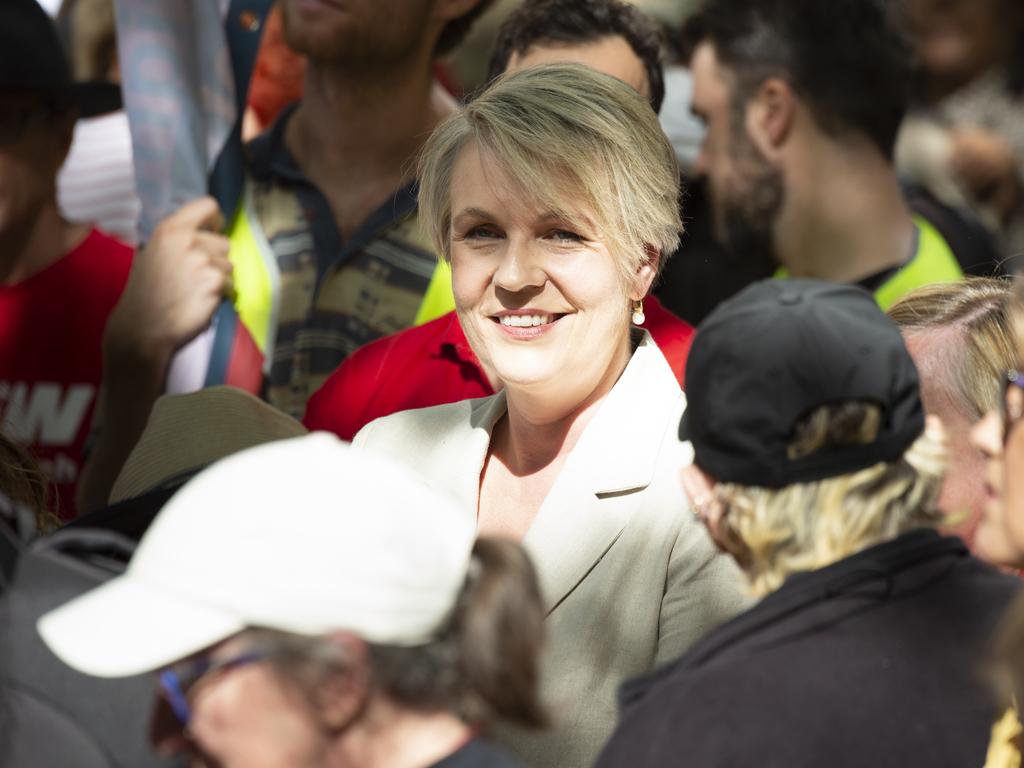Wage transparency ‘key’ to tackling gender imbalance
Companies must commit to revealing how much they pay male and female employees on average as a first step to eliminating the gender imbalance, experts say.

Companies must commit to revealing how much they pay their male and female employees on average as a first step to eliminating the national gender pay gap, experts have declared.
The Albanese government’s jobs summit next week will include a “a strong and overarching focus on women’s experiences of the labour market and the challenges of ensuring that women have equal opportunities and equal pay”, according to the Treasury’s issues paper.
That remains a massive task. Data from the ABS shows women in full-time jobs earn on average $1610 a week, or about 14 per cent less than the average weekly income of $1873 for men.
The gap narrowed from 17.5 per cent a decade ago, but has remained relatively unchanged since 2018.
The Albanese government will increase childcare subsidies from the middle of next year – a key measure which it says will help lift overall workforce participation among women.
However, PwC partner Amy Auster said while better access to childcare was “helpful”, current discussions around how to improve gender equity in the workplace contained “false causal links”.
“We say (there’s a gender pay gap) because of women’s actions – that they take on more junior roles or take time out of work,” Ms Auster said. “But what we ignore is the fact they take these actions because they are paid less. And if you are paid less and you are partnered with someone who is paid more, you are going to work less.
“Female graduates are paid 4 per cent less than men immediately after graduation. It starts from day dot, and women never catch up. Pay women the same as men, and they will be represented in the workforce at the same rate as the men.”
Ms Auster argued that the first step to addressing the gender pay gap was to increase transparency at the company level, not least because the problems needed to be measured before they can be addressed.
The Workplace Gender Equality Agency has started consulting with thousands of Australian firms around reporting gender pay data at an organisation level.
Before that can be done, the Workplace Gender Equality Act of 2012 will need to be amended to allow the agency to publish gender pay gap information at an employer level – something the Albanese government has committed to do.

Workplace Gender Equality Agency director Mary Wooldridge said analysis conducted with KPMG showed that about a quarter of the gender pay gap was due to what’s known as “industrial segregation” – the predominance of women working in high-employing and high-growth, but low-paying, industries such as aged care, childcare, and nursing.
Ms Wooldridge said that improving the gender balance within these female-dominated areas would go a long way to rebalancing the economy, as well as pay relativities.
Women taking time out of the workforce accounted for another third of the gender pay gap, she said, which suggested it was “absolutely critical that we continue to drive good parental leave and return to work policies”.
“We need to focus on job flexibility and look at the different ways both women and men can work to blend their work and caring responsibilities,” Ms Wooldridge said.
The remaining 40 per cent of the pay gap was unexplained. Ms Wooldridge said it could be put down to discrimination in the workplace.
Even in the most feminised industries, men on average earn more than women, she said.
“We really need to be thinking about creating a different culture and the expectations that we have for young men and women to think about all range of careers,” she said.








To join the conversation, please log in. Don't have an account? Register
Join the conversation, you are commenting as Logout